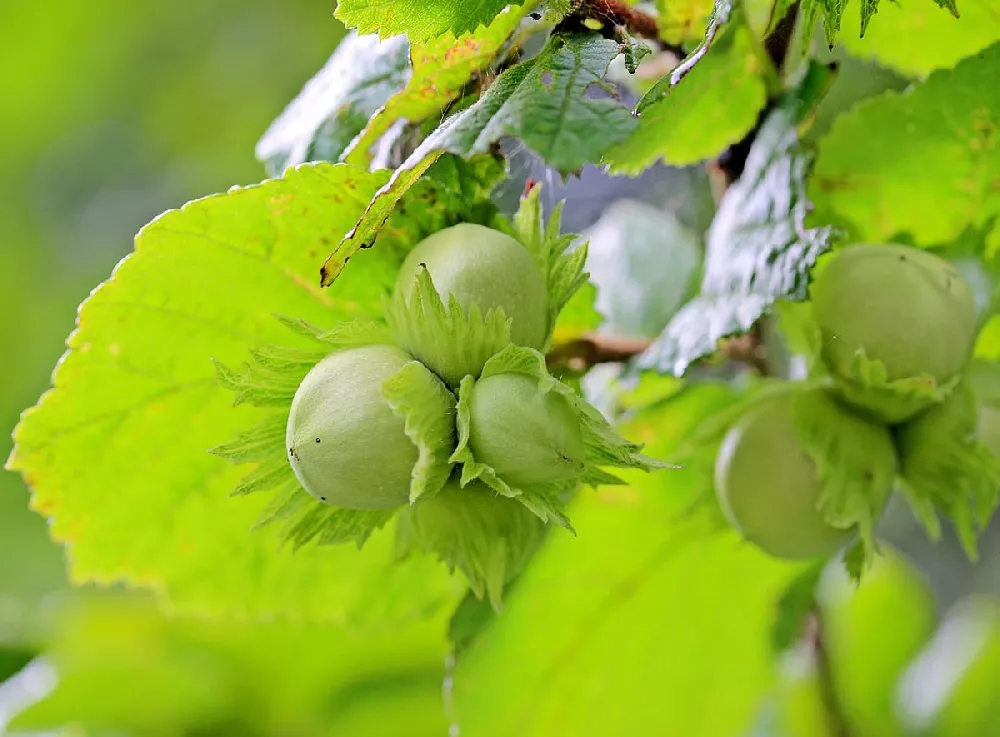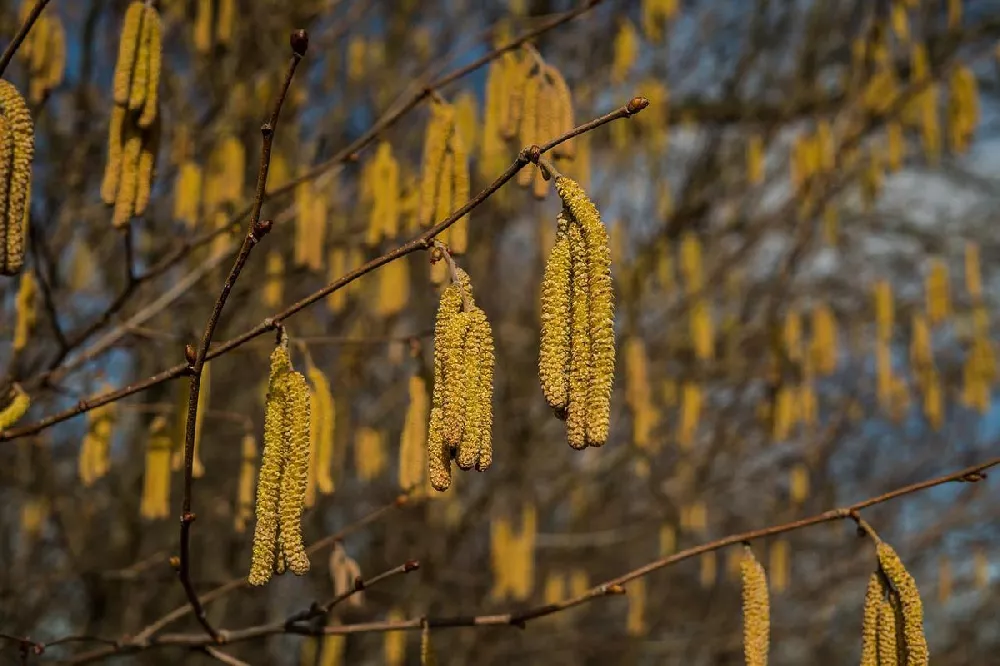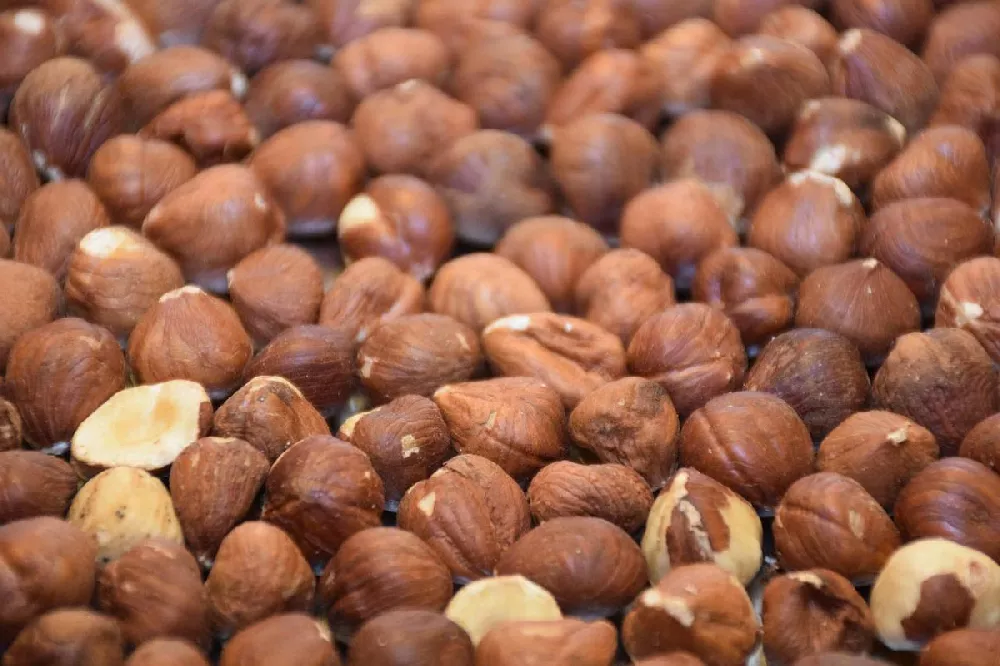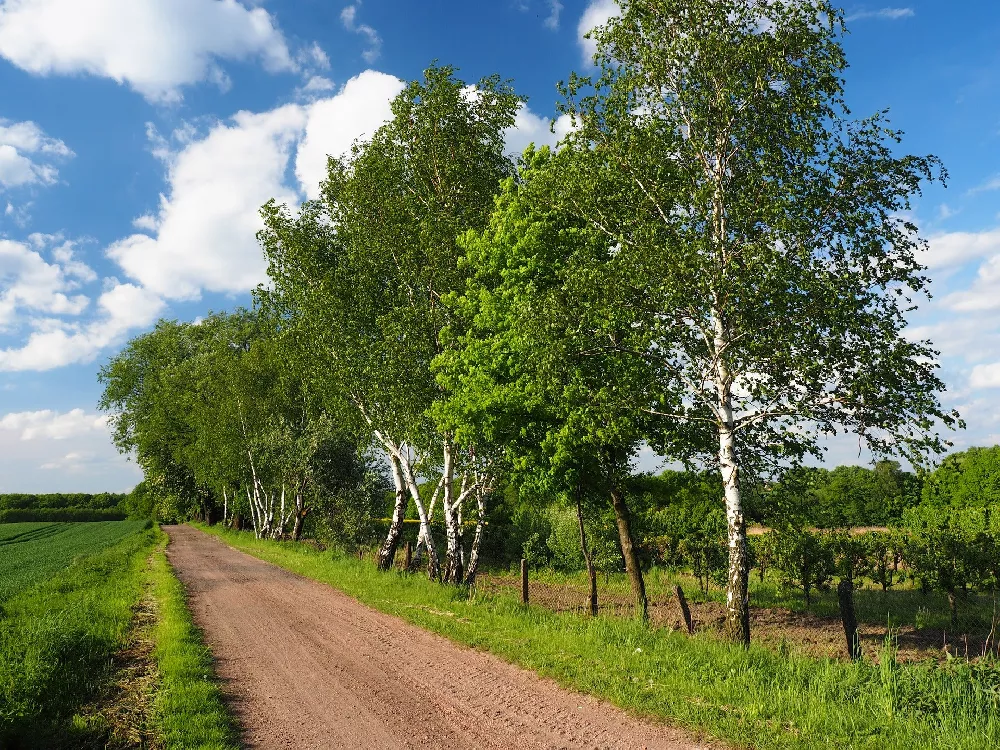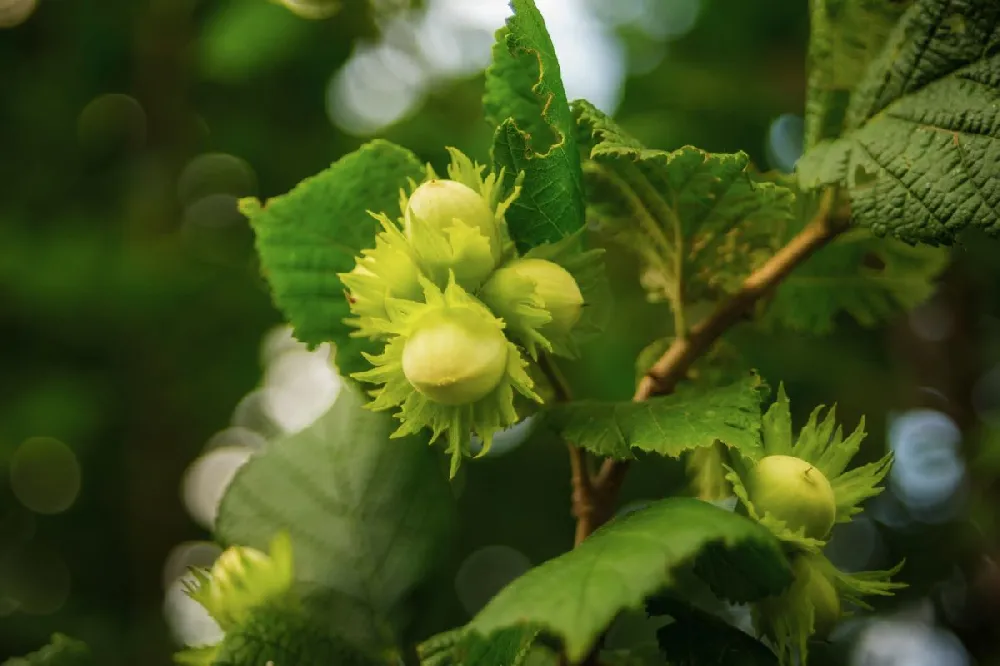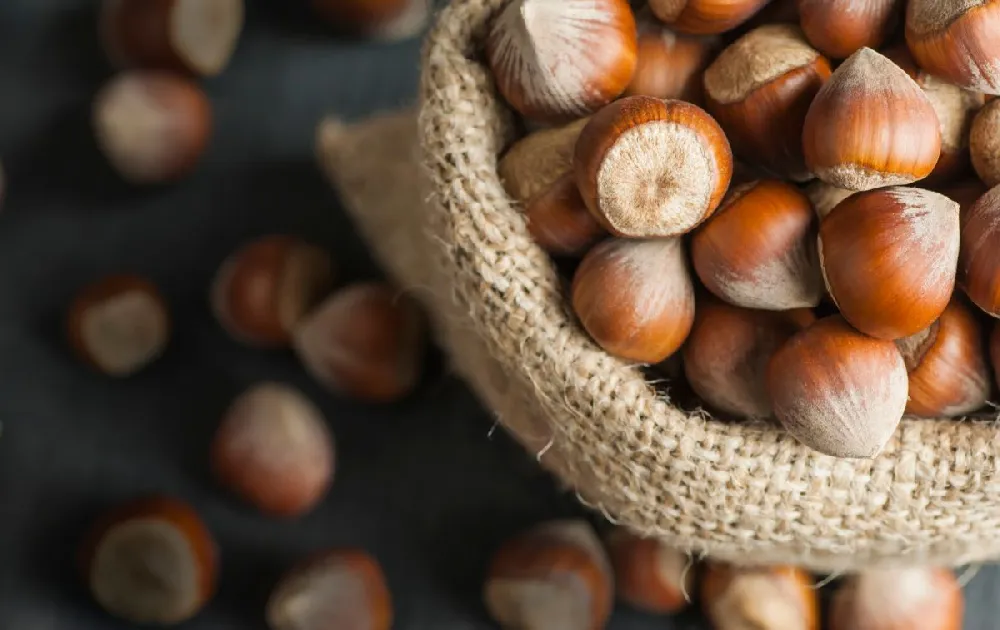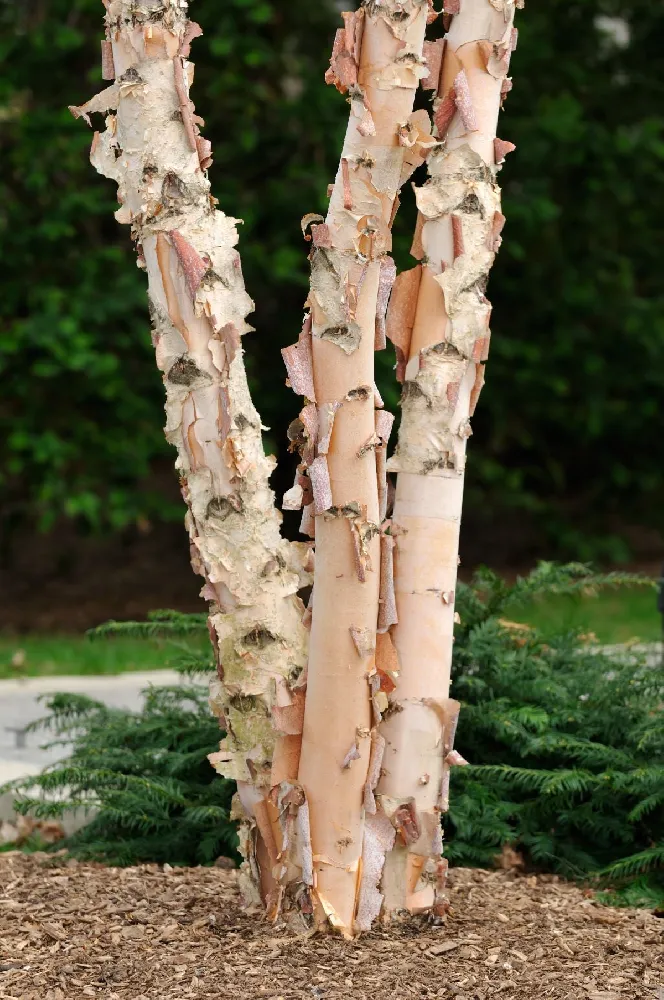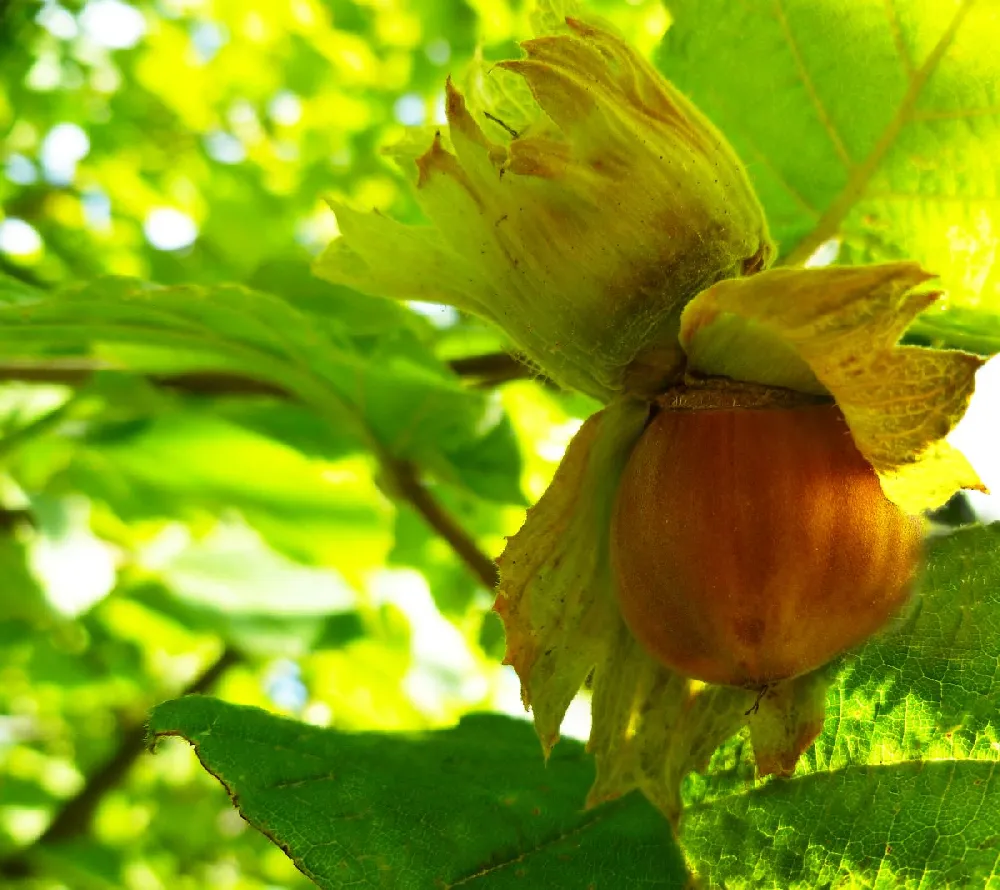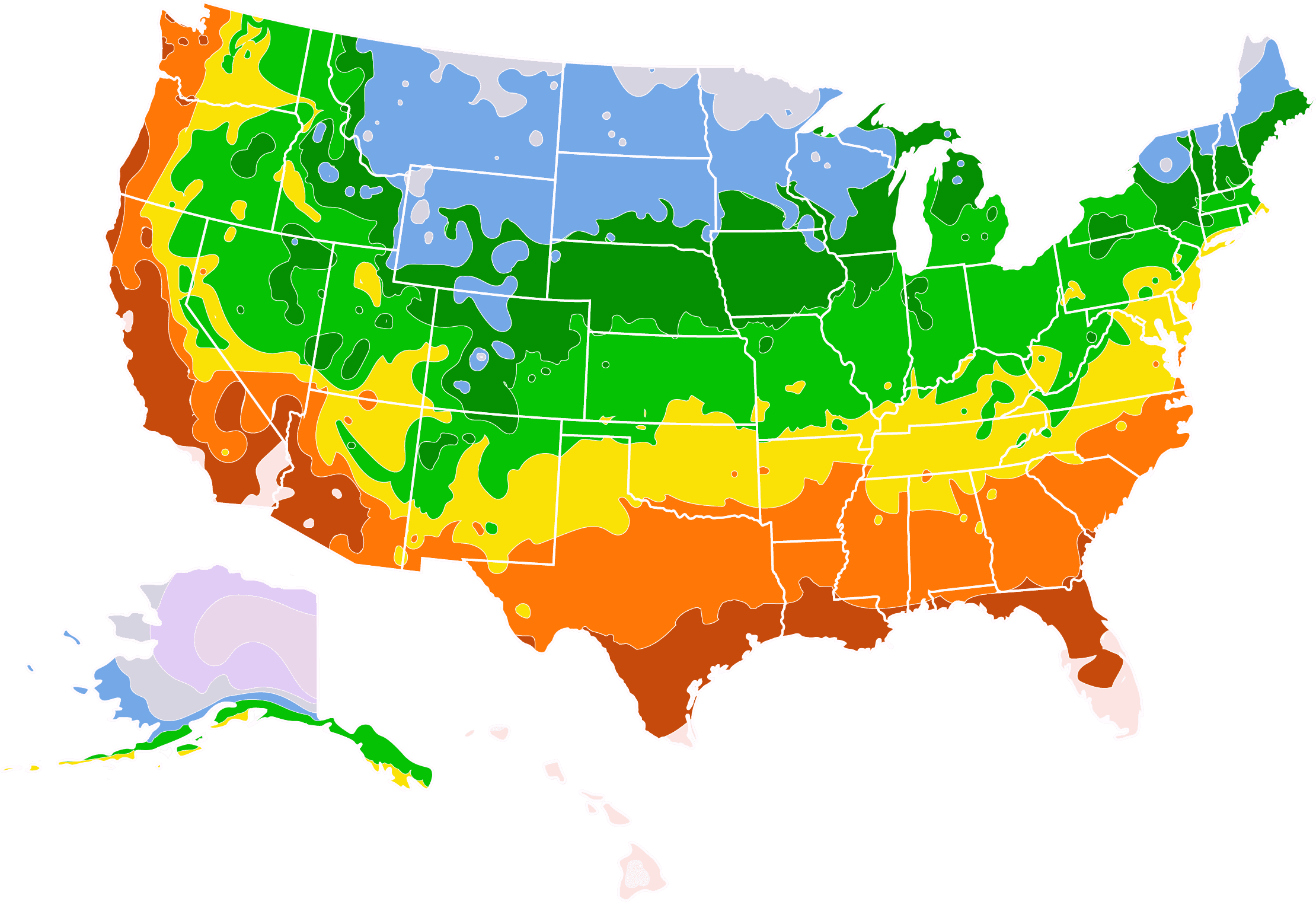- Home >
- Nut Trees >
- American Hazelnut Tree
American Hazelnut Tree for Sale - Buying & Growing Guide
- Ships in 1-2 days
- 1-Year Warranty Eligible
- Pots or accessories are not included unless specified in the product options.
Shipping Details:
Once your order is shipped, you’ll receive an email with a tracking number and estimated delivery date. Most orders ship immediately, but some items are seasonal and may only ship in spring or fall. These products are noted on the website.
If you find hazelnuts a satisfying and delicious treat, you will be happy to know that having your own supply is easy with this easy-to-care-for tree. The American hazelnut, Corylus americana, is a native plant that grows as a large shrub or small tree across the East Coast and beyond. It needs little extra care and is not fussy about where it’s planted as long as the soil drains well and it gets at least four hours of sun a day. Your tree will start bearing fruit one to three years after planting, and a single, well-cared-for plant can produce up to 25 pounds of nuts a year when mature. It's an attractive tree even when not producing, with lush green foliage that turns bright yellow and red in fall. Here are a few more reasons to love the American hazelnut tree.
- Its nuts can be eaten raw, used in cooking, and even ground into a nutritious flour.
- The trees provide shelter and food for a wide range of wildlife.
- American hazelnut trees are easy to grow throughout most of the continental United States.
Plant Care
Sunlight

American hazelnut trees do best in full sun to partial shade, with four or more hours of direct light a day.
Watering
Water mature plants every few weeks, especially during dry or drought-like weather.
Fertilizing

American hazelnut trees actually do best when they are not fertilized regularly, which will hinder nut production.
Planting and Care
Planting instructions
The American hazelnut tree grows naturally in the wild along the edges of forests, so your tree will thrive if you site it where it will get dappled or morning sun, in well-drained soil. Unpot your plant and tease out any encircling roots, which can girdle the tree and slowly kill it. Dig a hole that’s as deep as the root ball and twice as wide. Fill the hole with water and let it drain down. Place the plant in the hole, and, while holding it upright and steady, fill in around it with good-quality topsoil. Tamp down the soil as you go to eliminate air pockets. Water thoroughly. Apply a 2- to 3-inch layer of an organic mulch, such as bark chips, to conserve moisture and hinder weeds, but keep it from directly touching the trunk.
Watering and nutrients
When newly planted, water your American hazelnut tree every few days, aiming for an inch of water a week. After its first year, your shrub should be well-established and need less supplemental watering. At that point, check the soil 2 inches below the surface. If it’s dry, give the shrub water. American hazelnut trees do not need extra fertilizer, as long as they are planted in relatively fertile soil. Too much fertilizer will encourage leafy growth but hinder nut production.
Pollination
The American hazelnut tree is self-fertile, producing both red female flowers and yellow male catkins on the same plant. You will, however, have a larger harvest if you plant two or three trees near each other. The agent of pollination is the wind, which helps fertilize the female flowers, resulting in the small round nuts, which are encased in a hard shell and green husk. They mature in late summer and early fall.
Pruning
Although you can trim out broken, diseased, or dead branches at any time of the year, do your main pruning in late winter, before bud break. Prune branches back to the collar of the limb, where it is attached to a larger branch. You can prune for size and shape, and you may also cut out selected branches within the bush to open up the canopy so that light and air can circulate. Remove old growth as well — cut it back to the ground along with any suckers that spring up from the roots.
Pests, diseases, and animals
The American hazelnut tree has few natural pests or diseases. Watch for leafroller moths, which may be identified by web-like structures they build that cause the leaves to roll up. Cut off infected branches where you see them and dispose of them far from the tree’s site. The most common disease of the American hazelnut tree is eastern filbert blight. This is a fungal disease that causes cankers and branch death. Your best bet is to plant resistant cultivars and remove infected branches 1 to 3 feet below the cankered area. Chemical control is also possible, but consult with an arborist for details.
Harvesting
Before harvesting season, clear the area around your tree of any debris. The nuts often fall from the trees when ripe, and it will be easier to rake them up if the area within the tree’s drop zone is clear. You can encourage them by shaking the tree gently. Examine nuts for wormholes, discarding those that have them. You can also tell if a nut is good by dropping it in a bucket of water. Those that float should be discarded. After picking, lay the nuts out to dry for two to four weeks in a single layer in a warm, dry spot. You can also use a dehydrator to dry them. They can be stored at room temperature for several months as long as they are not shelled. Shelled nuts should be refrigerated or frozen.
Achieving maximum results
As we noted above, American hazelnut trees are monoecious, or self-fertile. What that means for you is that you should be able to have a light harvest even if you only have one tree. But to really maximize your tree’s potential, it is helpful to have two or three trees in close proximity to each other so that there can be some additional cross-pollination between the trees. The mature width of an American Hazelnut is 10 to 12 feet, so if you plant multiples, allow enough space between them to encourage growth. You can use a slightly tighter configuration, however, if you intend to use your trees as a hedge or privacy screen.
FAQs
Where can I grow American hazelnut trees?
American Hazelnuts are, not surprisingly, native to America. They grow throughout the continental U.S., in all but the most northern and southern extremes. You can safely grow them in USDA hardiness zones 4 through 9, although in a spot that was protected from winter winds, you might be able to grow them north of that, if you wrapped your bushes in burlap for the winter.
Is the American hazelnut a tree or a bush?
It can be grown as either. Pruning out all but the central trunk, and removing low branches over a several-year period, will give you a nicely shaped tree that maxes out at a height of about 15 to 18 feet. But you can also allow the secondary trunks and low branches to grow and keep the plant trimmed back to form an equally attractive, lush, bush. Either way it adds presence and form to your landscape.
How are American hazelnuts used?
There is little that this versatile nut can't do. It's fine when dried and eaten straight from the tree. It can also be used in any recipe that calls for nuts, and hazelnut is a popular flavor to add to coffee and other drinks. The oil is considered as good as olive oil for cooking, and hazelnut remnants are frequently used as an animal feed. It is also a superior biodiesel feedstock — it is considered superior to even the soybean.
Compare Similar Products
You can't add more Product Name - Product size to the cart.
OK